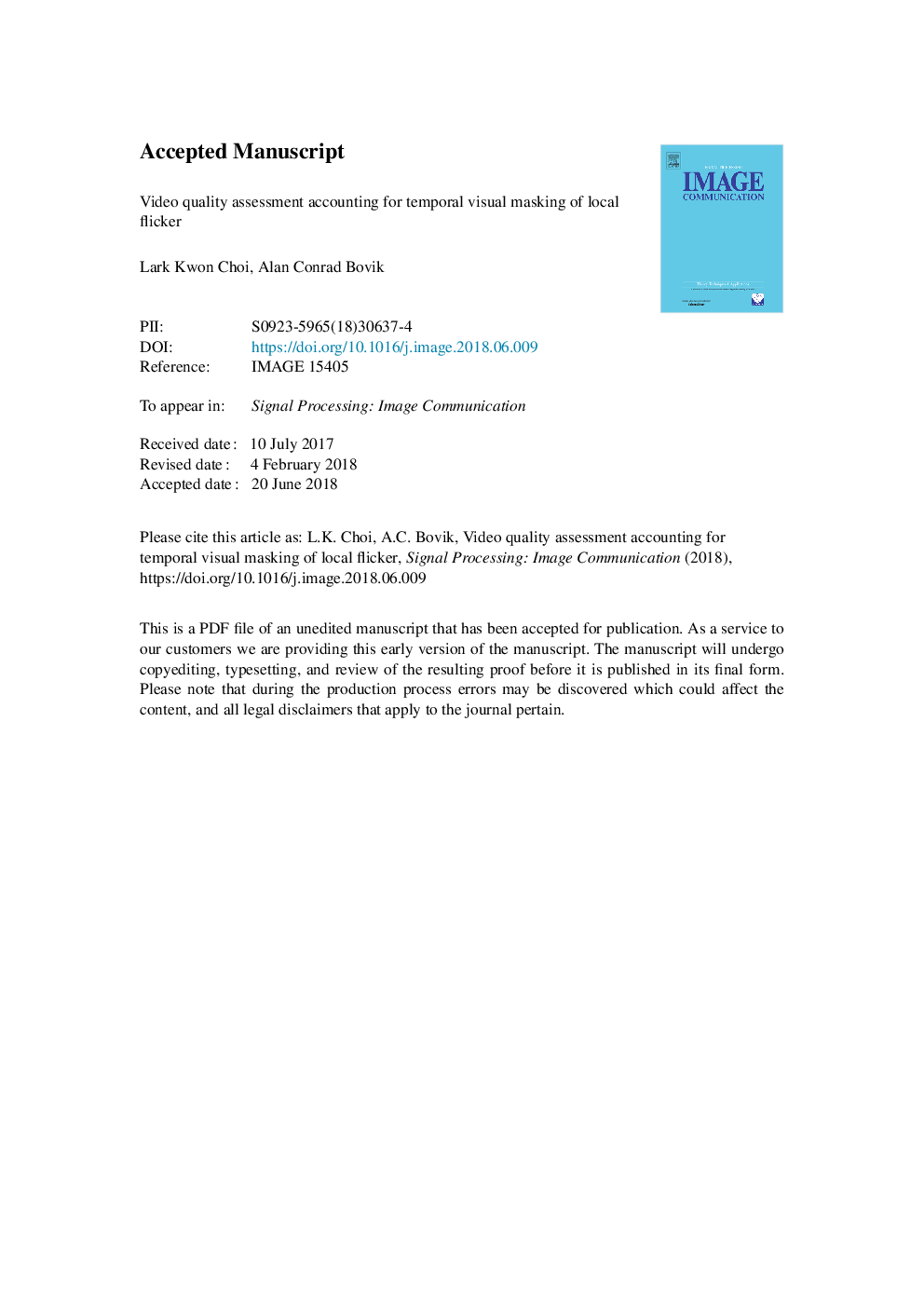| Article ID | Journal | Published Year | Pages | File Type |
|---|---|---|---|---|
| 6941478 | Signal Processing: Image Communication | 2018 | 19 Pages |
Abstract
An important element of the design of video quality assessment (VQA) models that remains poorly understood is the effect of temporal visual masking on the visibility of temporal distortions. The visibility of temporal distortions like local flicker can be strongly reduced by motion. Based on a recently discovered visual change silencing illusion, we have developed a full reference VQA model that accounts for temporal visual masking of local flicker. The proposed model, called Flicker Sensitive-MOtion-based Video Integrity Evaluation (FS-MOVIE), augments the well-known MOVIE Index by combining motion tuned video integrity features with a new perceptual flicker visibility/masking index. FS-MOVIE captures the separated spectral signatures caused by local flicker distortions, by using a model of the responses of neurons in primary visual cortex to video flicker, an energy model of motion perception, and a divisive normalization stage. FS-MOVIE predicts the perceptual suppression of local flicker by the presence of motion and evaluates local flicker as it affects video quality. Experimental results show that FS-MOVIE significantly improves VQA performance against its predecessor and is highly competitive with top performing VQA algorithms when tested on the LIVE, IVP, EPFL, and VQEGHD5 VQA databases.
Related Topics
Physical Sciences and Engineering
Computer Science
Computer Vision and Pattern Recognition
Authors
Lark Kwon Choi, Alan Conrad Bovik,
